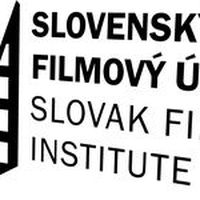Overview Of The Industry Development
film.culture360.asef.org (formely know as SEA-Images) presents a series of portraits on the Slovak film industry and its regional integration in the framework of the Slovakian ARTFILM festival in Trencianske Teplice
FILMS IN SLOVAKIA - PART 1
GGG: If we compare the present results to the figures of the last decade, the Slovak film industry seems to be in a rather good position isn’t?
VS: The situation for filmmaking in Slovakia had really experienced hard time. In 1989 the subsidies given by the Socialistic State to the movies and amounting the equivalent of one hundred million Czechoslovak Krowns, were the first cut in the budget of the following government. Starting from 1990 the State subsidies were falling to zero. The reason for that fall came from a wrong decision that the film industry should follow the rules of the New Economy where films, as any other good would find their positions in the market.
That was the first mistake with the consequence that no feature films were produced for several years. This situation prevailed also after the split of Czechoslovakia into a Czech and a Slovak independent State. The second mistake came probably with the privatisation of the KOLIBA film studios in Bratislava in 1996 during the Meciar era. In 1998 no more film were made there and the studio fall bankrupted. Today the situation is that Slovakia has no major film studio, and no investor is at the horizon because of the uncertainty about the next trial concerning KOLIBA.
After the 1998 Slovak elections strong calls came from the film industry, the media and the people to ask for prompt measures to “Keeping the Slovak film alive”. The first decision was to set up a group of experts to define the priorities and to come up with a programme for the film industry. It is only following the 2002 elections, and also after Slovakia join the Media programme in 2003 that the situation started to improve.
Of course we would always need to improve some sectors and this would require more money. But, today the State subsidies have growing up and reached the level of 4 million euro for this year, which compare to last year is a grow from the simple to the double, and it is also four time as much as the year before.
GGG: What is the European contribution to the improvement of the situation?
VS: Since Slovakia is a member of the Media programme, the subsidies coming from Europe to the Slovak industry is one million euro, which for a small country like Slovakia is not bad at all. Here at Mediadesk we have also been doing a lot of work for networking to bring the producers together, to help them co produce and, to bring the Slovak industry to the European market.
With a good production especially for animation and documentary films, the generation that finished the curriculum in the film schools after the integration to the European is also contributing to the raise of quality within the Slovak film industry. These elements put together have created an environment, which in terms of film production bring from four to six Slovak films a year regularly.
The country will still need a stronger involvement from the television, which was restructured and seems to have agreed to invest in some documentary and into short films. The position of the Slovak television in the support to Slovak films still needs to be clarified, after what we should have quite healthy conditions for film making in Slovakia.
GGG: How is the regional integration of Slovakia in terms of co production and distribution?
VS: It is necessary to keep in mind that we are living in a small country with a market of only 5.5 million inhabitants. The last year have seen cinema attendance of just 2.4 million, which is not much. This year figures are better with 30% more tickets sold. Even with the latest better figures, for our industry, it is clear that co production is a matter of surviving.
As everywhere probably in the world, filmmaking is closely connected to some funding schemes.
In an ideal situation the State would cover about 30% of the global production budget, the television will also cover 30% and the remaining will have to be found through other sources that we usually call the co-production sources. Starting from this optimistic model we have tried to bring the legislative and the practical production means to another level.
We have organized three important co production seminars during the past three years. The seminars were focusing on co production with our direct neighbours from the European Union. These neighbours are Austria, the Czech Republic, Hungary and Poland. We are speaking different languages in the five different countries. We can understand the Czech because we have shared more than seventy years of common history, common education and media influences. But, our children start not to understand the Czech language.
Nevertheless, we are living in one cultural space where people are eating more or less the same food, and they are thinking in a similar way also. This is the basement for establishing a co production programme with a legislative and financial body. There is already a Visegrad Fund which finance initiatives from the Visegrad countries that are: Slovakia, Poland, Hungary and the Czech Republic (also called the V4) but the filmmaking is just a small part of this fund which is subsidising all kind of event, seminars etc.
Therefore, we have been thinking to make a new step by establishing a fund for Central Europe for the V4 plus Austria and Slovenia. Since a year and an half, the different ministry of culture, film institutions and funding bodies of these countries have been working together with experts from Scandinavia, where regional funding are operating well. Now the group of experts has finished their work.
If the political environment remain stable in the region (elections were at the agenda’s of all these countries), we should see the fund starting to operate from the next year at the end of 2007. This fund will be called CECI which stands for CENTRAL EUROPEAN CINEMATOGRAPHY INITIATIVE. This fund shall first of all support the distribution, the production and the co production. This fund will never replace existing fund such as the Media programme or others but will operate as an additional fund, in the same way as other European regional funds.
RELATED:
About the V4 group of countries (governmental website)
Report on the Slovak film industry in 2005 (PDF)
About Vladimir Stric and Andrew Cheng movies
WELCOME TO DESTINATION SHANGHAI
“When it comes to camera work, I really liked this film directed by Andrew Cheng. The film is open to the future. It was made using simple methods, with a couple of actors, on a video camera; I don't think it cost much money, and perhaps it took two weeks to make. It proves that a director does not necessarily need large resources. In short, a little can go a long way in film. Talent and willpower are needed. This film brings new visual methods bordering on the avant-garde, because it is filmed in a very suggestive and concentrated way, even though the means employed are simple.”
Next issue: FILMS IN SLOVAKIA - PART 2 “INDONESIAN FILMS AT THE SLOVAK ARTFILM FESTIVAL”
By Gyora Gal Glupczynski
Similar content
By Kerrine Goh
07 Oct 2006
By Kerrine Goh
07 Oct 2006
posted on
04 Mar 2011
posted on
10 Jul 2018
from - to
07 Jul 2011 - 09 Jul 2011




